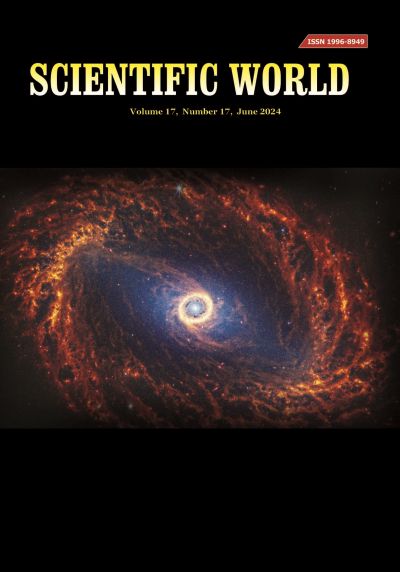Frontier molecular orbitals, MEP, NBO, and vibrational spectra of Mesalamine: A first principle study from DFT and molecular docking approaches
DOI:
https://doi.org/10.3126/sw.v17i17.66417Keywords:
Mesalamine, DFT, FT-IR; FT-Raman, HOMO-LUMO, MEP, Molecular dockingAbstract
The main purpose of this work is to investigate the structural, electronic, and vibrational features of mesalamine (C7H7NO3) from density functional theory (DFT) approach. The optimized structure has been obtained from DFT calculation by using the functional B3LYP/ 6-311++G(d,p) basis set. The spectroscopic feature (FT-IR and FT-Raman) of the investigated compound has been calculated from the same level of theory. The molecular electrostatic potential (MEP) analysis is used to identify the distribution of charge around the compound. The highest occupied molecular orbital (HOMO) and lowest unoccupied molecular orbital (LUMO) have been studied and their energy gap (∆EL-H) L is used to study the chemical potential (μ), hardness (n), softness (S) and electrofilicity index (ω) of the molecule. The electron transfer property has been scrutinized from natural bond orbital (NBO) analysis. Additionally, molecular docking was carried out to identify binding sites and the binding behavior of the ligand with a predicted target protein (Carbonic anhydrase II).




